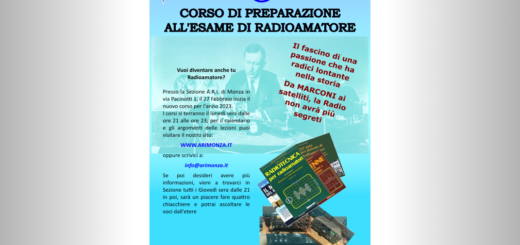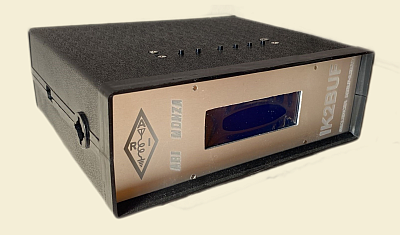10 Dicembre 2018
An International Space Station school contact has been planned for Serena Aunon-Chancellor KG5TMT with Collège Léonce Bourliaguet, Thiviers, France.
The event is scheduled Monday 10 December 2018 at approximately 13:12 UTC (14:12CEWT).
The conversation will be conducted in English.
The contact will be a direct operated by F5KEM.
The downlink signals will be audible in parts of Europe on 145.800 MHz FM.
Location Information:
Due to its geographical location, Thiviers has always had a commercial vocation, and the reputation of its agricultural products has largely contributed to its expansion.
As a medieval fortified town, Thiviers was always coveted for its strategic position, Thiviers was even many times destroyed, the town has been rebuilt again and again with the passage of history.
Thiviers is a place of pilgrimage on the way to Santiago de Compostela.
In the middle of the 18th century, for more than 174 years, Thiviers was an important place for earthenware. The small dynamic town of about 3000 inhabitants is famous for its many fairs and markets, including the Goose and the Duck in winter. The fairs of Thiviers were already known in the 15th century. In 1962, the city organized the first award-winning fair in the Dordogne, allowing it to obtain a label for its greasy markets and to be proclaimed “Capital of Foie Gras in Périgord”.
Ensuring the natural transition between the Limousin in the North and the great province of Aquitaine in the South, Thiviers is a gateway to the South of the Regional Natural Park Perigord-Limousin. Its geographical position is remarkable, on the RN21. On the other hand, its rail passenger and goods traffic ensures a continuous and ever increasing activity towards major centers. Several companies are located in Thiviers, “ARCADIE Sud Ouest” the Thiviers slaughterhouse and the Thiviers quarries are the two main ones.
School Information:
Located in a small town in a rural area, between Limoges and Perigueux, the College Leonce Bourliaguet hosts about 360 students between 11 and 15 years old.Leonce Bourliaguet was an imaginative and prolific author for the youth, born in Thiviers in 1895.
Besides the usual subjects (French, Maths, English, Spanish, History and Geography, P.E., Science, Music, Technology, Art), some of them have the opportunity, if they wish, to follow an artistic education (dance, music), a sport option (basketball) or a scientific option.
In this scientific option, the students have been working for several years on different themes related to space and astronomy. They join in different events such as the yearly Science Festival or scientific contests. Last year, they were among the French schools selected to work with the ISS.
Students First Names & Questions:
1. Etienne (10): What was the first thing you did aboard the ISS?
2. Lola (10): Did you always want to become an astronaut?
3. Lotte (13): Were you afraid during the Soyuz take-off?
4. Adele (13): Is it difficult to get used to zero-gravity?
5. Tiago (11): Do you sleep well in space?
6. Emma G (13): Is there any turbulence in the ISS as you would have with a plane?
7. Mayline (11): What was your first impression while performing a spacewalk?
8. Manon (11): Have you seen a lot of aurora borealis?
9. Antoine (11): Have you ever observed any bizarre or strange phenomenon aboard the ISS?
10. Kylian (14): Can you view the Thiviers quarries from space?
11. Nicolas (14): Is it possible to take a picture of Thiviers from space?
12. Emma D (13): What do you usually do during your spare time?
13. Emma N (11): What is the most complicated daily task you have ever done in space?
14. Yohann (11): What is the most fascinating task you have ever done in space?
15. Erwan (14): Is the physical training to become an astronaut hard?
16. Louis (11): Do astronauts loose or gain weight when in space and how much?
17. Eva (11): What is your best memory of space?
18. Baptiste (11): What is your worst memory of space?
19. Abe (14): Do you miss your friends and family?
20. Yoann (11): What makes you dream in your job?
About ARISS:
Amateur Radio on the International Space Station (ARISS) is a cooperative venture of international amateur radio societies and the space agencies that support the International Space Station: NASA, Russian Space Agency, ESA, JAXA, and CSA. The US Center for the Advancement of Science in Space (CASIS) and the National Aeronautics and Space Administration (NASA) provide ARISS special support.
ARISS offers an opportunity for students to experience the excitement of Amateur Radio by talking directly with crewmembers on board the International Space Station. Teachers, parents and communities see, first hand, how Amateur Radio and crewmembers on ISS can energize youngsters’ interest in science, technology, and learning.
The primary goal of ARISS is to promote exploration of science, technology, engineering, and mathematics (STEM) topics by organizing scheduled contacts via amateur radio between crew members aboard the ISS and students in classrooms or informal education venues. With the help of experienced amateur radio volunteers, ISS crews speak directly with large audiences in a variety of public forums. Before and during these radio contacts, students, teachers, parents, and communities learn about space, space technologies, and amateur radio. For more information, see www.ariss.org, www.ariss-eu.organd https://www.amsat-on.be/hamtv-summary/.






